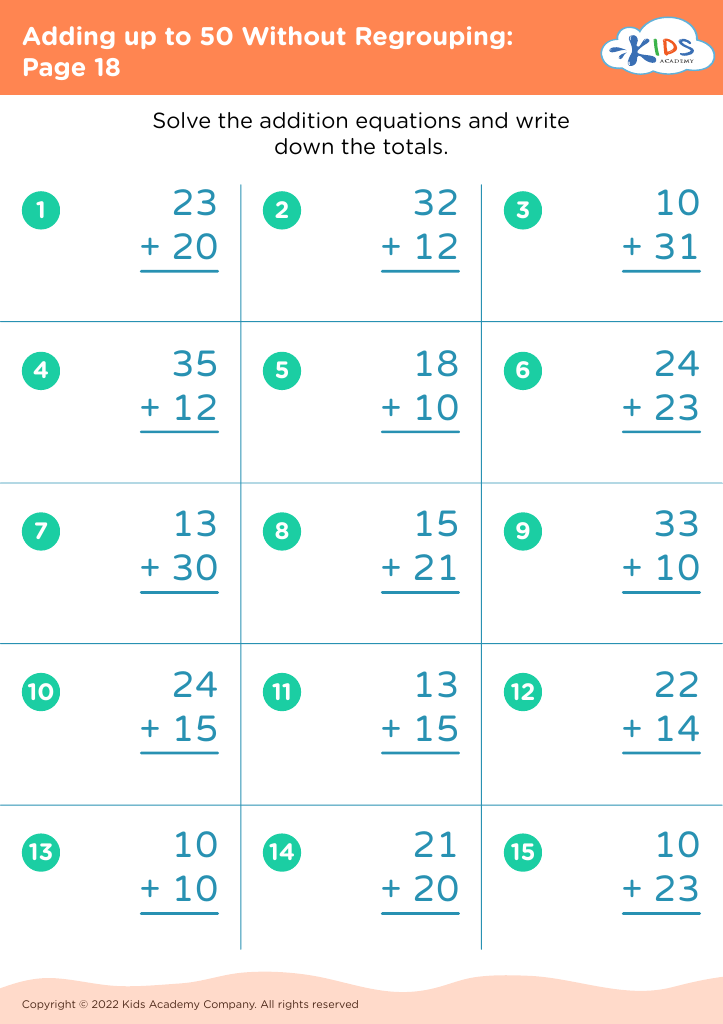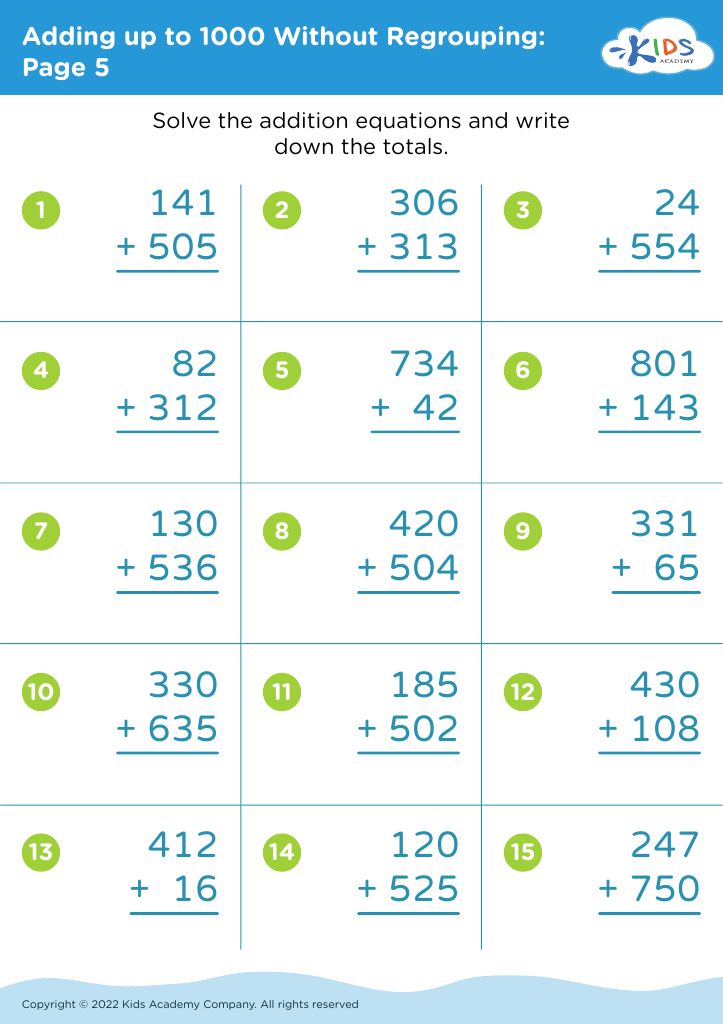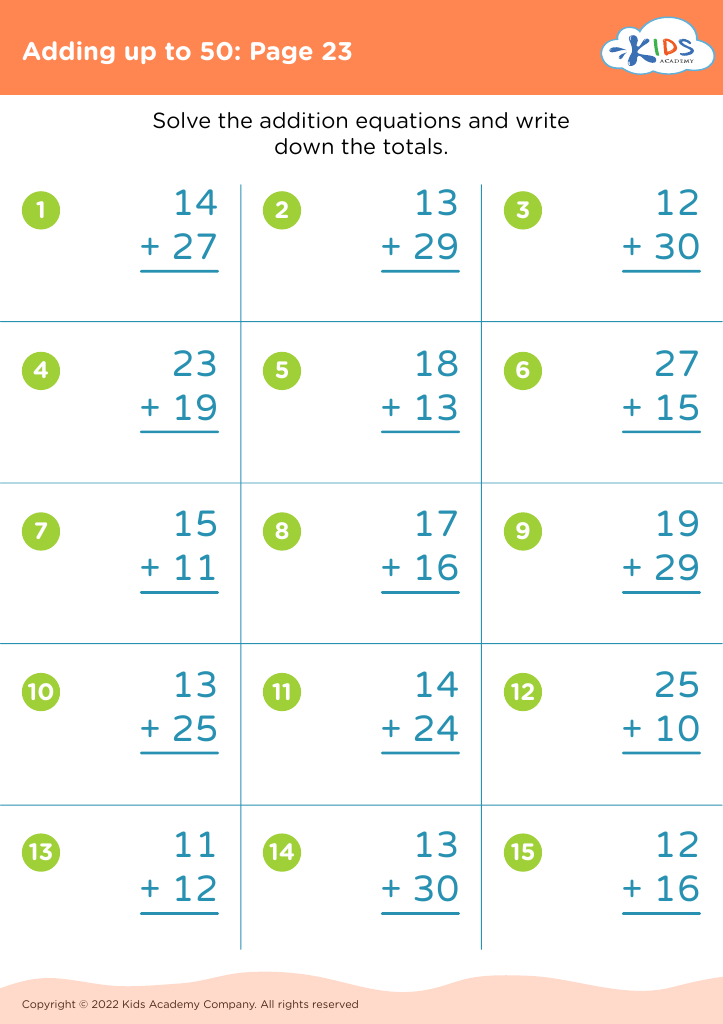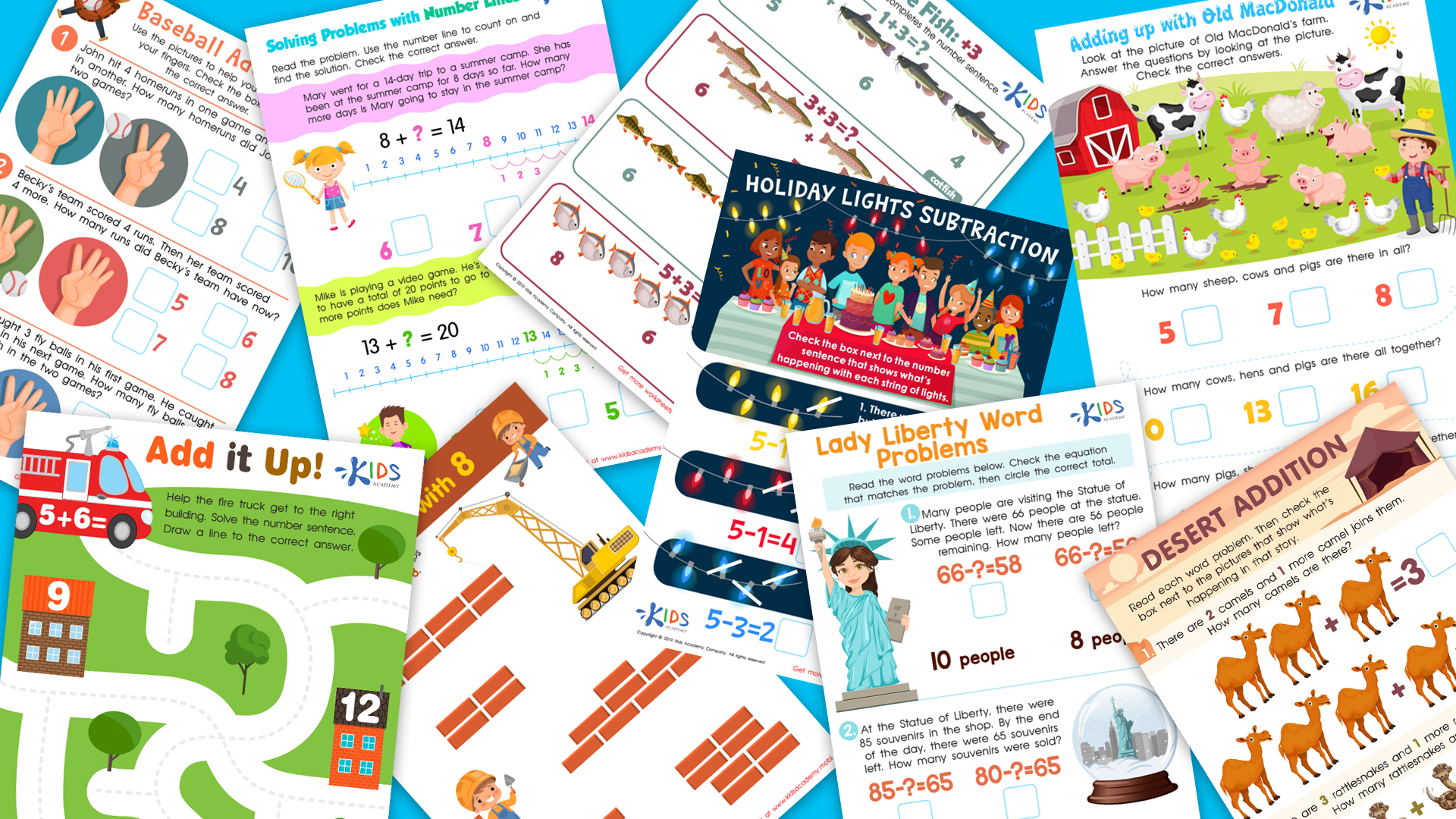Visual representation comprehension Addition & Subtraction Worksheets for Ages 4-8
5 filtered results
-
From - To
Boost your child’s math skills with our "Visual Representation Comprehension Addition & Subtraction Worksheets" designed for ages 4-8! These engaging worksheets utilize vibrant illustrations and clear visuals to enhance understanding of basic addition and subtraction concepts. Ideal for young learners, our curriculum fosters essential skills through fun activities that promote cognitive development. Children will interpret visuals to solve problems, reinforcing their comprehension and boosting confidence in math. Perfect for classroom settings or at-home practice, these worksheets make math both enjoyable and effective. Start paving the way for your child’s academic success with our engaging visual learning resources today!
Parents and teachers should prioritize visual representation comprehension in addition and subtraction for children aged 4-8 because it lays the foundation for mathematical understanding. At this stage, young learners are still developing abstract thinking skills. Visual aids, such as number lines, manipulatives, or drawings, help make these abstract concepts concrete and accessible. When children can visually see the relationships between numbers and operations, they enhance their ability to grasp mathematical principles.
Furthermore, visual representation encourages engagement and motivation. Children are naturally curious, and using bright images, fun shapes, and interactive materials can make learning enjoyable and effective. It also helps students with diverse learning styles by catering to those who grasp information better through visual rather than verbal means.
Moreover, these skills foster problem-solving and critical thinking abilities. When children learn to represent problems visually, they gain tools for tackling more complex mathematical ideas in the future. In an ever-evolving world that emphasizes STEM (Science, Technology, Engineering, Mathematics) education, having a strong foundation in math through visual comprehension will better prepare students for academic success and real-world applications in their lives. Engaging with these strategies will benefit both learners and educators alike.






















